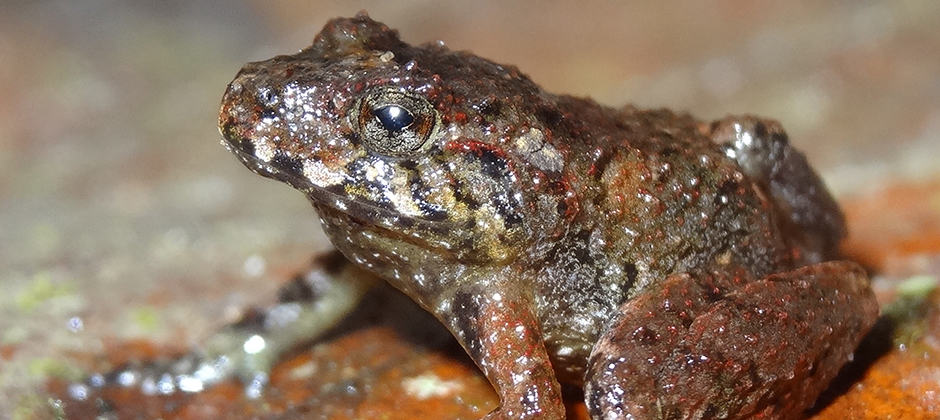Share this article
Extinct or not? Hundreds of unseen species remain ‘lost’
Until the mid-1800s, the Jamaican petrel was a common site on the shores of its namesake island. But then came invasive rats and mongooses, and the bird disappeared. Biologists have searched without luck. Since 1879, it has never been seen.
Is the Jamaican petrel (Pterodroma caribbaea) extinct? Or just lost?
That was the species that got researcher Tom Martin wondering. How many other animals were in that same position—unseen for decades but never declared extinct? And what did that mean for conservation?
The answer to the first question was 562, according to a study he led that was published recently in the journal Animal Conservation.
The answer to the second question is a bit more complicated, but it’s one Martin believes biologists need to reckon with at a time when climate change and habitat loss are driving up extinctions.
“We know we’re in an Anthropocene extinction. We know we have thousands of species going extinct now, let alone what happens down the line. But the numbers don’t add up very well,” said Martin, a conservation scientist with the Wild Planet Trust at the Paignton Zoo in Devon, England.
Since the year 1500, only 309 terrestrial vertebrates have been declared extinct—far fewer than the actual number that have likely disappeared, Martin said. In recent decades, biologists have been reluctant to declare species extinct, even long after they’ve vanished from sight. Who’s to say a few aren’t hiding somewhere in the wild?
Just ask “Fernanda.” Biologists recently reported in Communications Biology the first sighting of a Fernandina Island Galápagos giant tortoise (Chelonoidis phantasticus)—also known as a “fantastic giant tortoise”—since a single specimen was collected in 1906.
“They’re right to be cautious,” Martin said. People will lose trust in the label “extinct” if species thought to be gone from the earth keep showing up.
“But there’s another side to that that hasn’t been well explored,” he said. “If you rarely declare species extinct, you get this ever-growing list of what we call ‘lost’ species.”
That can also have consequences, he said. Conservation funds dedicated to protecting those species could be better spent on keeping species that are still around, but endangered, from joining them. The top four on the Zoological Society of London’s EDGE projects’ list of priority mammal species—two species of Indonesian egg-laying mammals known as echidnas, a New Zealand bat and the Chinese river dolphin (Lipotes vexillifer)—haven’t been seen in decades, Martin said. Freeing up the high-priority spaces they fill could benefit rhinos, pangolins and other species on the list.
And if species are rarely declared extinct, Martin worries, the public may never appreciate the thousands of species that are dying out around them. “That’s going to make it very difficult to get a true handle on the extinction crisis,” he said.
His team used computer coding to comb through 32,802 entries in the International Union for Conservation of Nature’s Red List in search of species labeled with keywords highlighting them as potentially “lost.” They ended up with a list of 2,700, which they checked by hand for species that hadn’t been seen for 50 years but hadn’t been declared extinct.
They came up with 137 amphibians, 257 reptiles, 38 birds and 130 mammals. Almost all of them were in the tropics—particularly Indonesia, Mexico and Brazil. There are good reasons for that, Martin said. The tropics have the most biodiversity, the greatest extinction threats and the least research.
His team’s list includes species like the Cebu brown dove (Phapitreron frontalis), a bird from the Philippines that hasn’t been officially observed since 1892, although possible sightings have occurred as recently as 2012.
So what can biologists do with these lost species? Martin’s team would like to see conservation organizations keep better tabs on when species have last been spotted. They’d like biologists to tally species as they’re either found or declared extinct.
But more than anything, they’d like researchers to increase their efforts to look for them.
“It’s a problem of funding,” Martin said. Finding them won’t be easy or cheap. If biologists can’t agree if the legendary ivory-billed woodpecker (Campephilus principalis) is still in the southeastern U.S., so how can they be sure tiny fossorial snakes are still burrowing in the forests of New Guinea?
But Martin believes accounting for these species will provide a better picture of the state of the world’s wildlife as extinctions continue to mount.
“If you leave these lost species, they’re going to get more and more unwieldy, and their numbers are going to grow and grow and grow,” he said.
Header Image: Miles's robber frogs (Craugastor milesi) are found only in a small patch of Honduran cloud forest. It was classified as extinct by the International Union for Conservation of Nature in 2004 but rediscovered again four years later. Credit: Tom Brown








